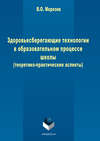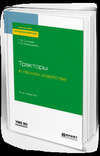Loe raamatut: «ESP: Accounting and Economics. Teacher’s book»
© Александра Егурнова, 2021
ISBN 978-5-0055-1782-1
Created with Ridero smart publishing system
MODULE 1
UNIT 1 CAREER CHOICE
Mind the Accent
Task 2. Fill in the table with words from the text below. Mind the rules of reading.

A few years ago, our firm put in a program that was suggested by Arianna Campbell of Boomer Consulting, and our people, especially our managers, really latched on to this, and we called it focus time. This is just a time that is set aside. We did three days a week, anywhere from an hour and a half to two hours. The rules are pretty simple. You’re allowed to turnoff your notifications, close your door, put on your headphones, whatever you need to focus, but you didn’t have to take phone calls from clients. You don’t have to schedule any meetings during that time. You don’t have to take phone calls from partners, from other employees. You’re free to work on whatever you need attention on at that time that you need uninterrupted activity. Cal Newport in his book Deep Work talks a lot about the power and the benefits and the fact that most of us in the knowledge profession need this uninterrupted time. Distractions can, even if we don’t realize them, can take a lot away from our focus and attention. The studies show it can take up to 20 minutes to get back into that concentrated effort. So you can imagine how slowly you would work if you had to deal with those interruptions on a regular basis.
Task 3. Practice good reading of the following limericks. Learn one of them by heart. Which occupations are mentioned in them? Which limerick is about your future profession?
Professions: teacher, miser (is not a profession), baseball player, rocket explorer.
Limerick about students’ future profession: none.
Vocabulary
Task 8. Take a look at the occupations given below. Decide which of these people: a) work in an office; b) do manual work; c) are self-employed. Some professions fall into several categories.
Work in an office:
A civil servant, a tutor, a CPA, a scientist, a lawyer, a PA, a professor.
Do manual work:
A carpenter, a newsagent, a florist, a stationer, a shop assistant, a plumber, a nurse.
Are self-employed:
A carpenter, a tutor, a CPA, a newsagent, a florist, a scientist, a stationer, a plumber, a lawyer, a cyclist.
Task 9. Explain the terms below and use them to complete the sentences.
1. Sorry, but the vacancy for a sales manager in the office has been filled.
2. Mike is very ambitious and interested in a job with good prospects for promotion.
3. Lucy studies at college during the day; that’s why she is in a part-time job.
4. Looking after a baby is a full-time occupation.
5. If you work extra hours, you will receive a handsome salary.
6. Not to go bankrupt, one third of the workforce is being made redundant.
7. Many workers were made redundant as a result of falling demand for the company’s products.
8. A performance-related pay gives our employees an incentive to work harder.
9. Energy efficiency and renewable power sources are the most essential topics addressed today.
10. Obviously, a pleasant and stress-free working environment increases productivity of the staff.
11. Jack’s been in a bad mood lately because of his temporary unemployment, perhaps.
12. Don’t even think to quit your permanent job or you’ll lose the stability you’ve been enjoying for so long!
Task 10. Work in pairs. Find the odd-one-out and explain why it doesn’t belong in the group. Use your dictionaries if necessary.
1. bonus – benefits – perks – fine
2. accountant – shrink – bookkeeper – CPA
3. interest – profit – penalty – benefit
4. revenue – loss – payment – bills
5. purchase – sale – asset – investment
6. idleness – business – career – position
7. salary – wage – capital – debt
8. experience – ignorance – practice – skill
9. professional – qualified – green – competent
10. manager – client – consumer – buyer
1) «Fine» is the odd-one-out because all other three mean something given or paid over and above what is due, whereas «fine» is a sum of money taken as a penalty.
2) «Shrink» is the odd-one-out because all other three are professionals who have completed their studies at some educational institutions and have required certificates.
3) «Penalty» is the odd-one-out because all other three mean «gaining something’ while «penalty’ stands for «losing».
4) «Revenue» is the odd-one-out because all other three mean «losing something’ while «revenue» stands for «gain».
5) «Sale» is the odd-one-out because it means «to sell something» while the rest infer «acquiring, buying something».
6) «Idleness» is the odd-one-out because it means «doing nothing, not working».
7) «Debt» is the odd-one-out because «debt» is an obligation to pay something while the other three mean that you are given some payment.
8) «Ignorance» is the odd-one-out because all other three are connected with the presence of knowledge while «ignorance» is «absence of knowledge».
9) «Green» is the odd-one-out because all other three are about people who are experts at their work while «green» means «lacking experience».
10) «Manager» is the odd-one-out because all other three are people who receive services, goods, etc. while a manager is a person who provides these services, goods, etc.
Task 11. Match the two halves of the sentences to make logical statements which contain a fixed phrase with job or work.
1) Our accountants must not make personal calls (C) in work hours
2) Thousands of hopeful job hunters (F) are queuing to emigrate
3) Job security is the most important factor (A) for many employees
4) Make sure your work place (H) is kept clean at all times
5) Her test results are excellent, but she (D) has no relevant work experience
6) Sorry, but washing the windows (B) is not in my job description
7) He’s too lazy and (E) has no work incentive
8) I’m more interested in job satisfaction than (G) in earning more money
Task 12. Fill in each gap with one suitable word from the table.
Leadership Skills
Accounting 1) professionals need to be ambitious self-starters who can develop new insights, manage projects, and motivate and engage 2) team members, all the while displaying solid leadership skills. While the partners at your firm or leaders in your department are 3) managing the business side of the organization, you may need to serve as a source of aid when colleagues need help 4) navigating a particular program or managing their first busy-season audit.
Additionally, your managers may look to you for 5) fresh ideas regarding how the organization can ensure continuity of service to 6) clients, improve compliance procedures or address a host of other issues.
Reading
Task 14. Answer the questions (1—6) using information from the text.
1. What kind of employees does the author look for?
B. Those who submit to the company’s culture.
2. During pre-interviews, the author pays attention to:
D. Communication skills.
3. How much do the hires of inexperienced workers in the author’s company comprise?
C. More than four fifths.
4. Internship program:
A. Shows the strengths and weaknesses of the prospective worker.
5. According to the author, it is better to invest in:
A. Interns.
6. The author is of the opinion that workers are:
D. Substitutable.
Task 16. Give synonyms from the text to the words below.
Free (thinkers) (paragraph 1)
Multiple (paragraph 2)
Unanimous (paragraph 3)
Interns (paragraph 4)
Leadership (paragraph 5)
Benefit (paragraph 6)
Tremendous (paragraph 7)
Morale (paragraph 8)
Grammar
Task 18. Fill in the table with appropriate verbs. Which grammar tenses are being described?

Task 19. Read the text and put the verbs in brackets into the Present Simple Tense.
The best tool for time management 1 IS probably one of the simplest tools, and that 2 IS having a schedule. You can do that on paper or with a phone or Outlook – whatever electronic versions 3 WORK best. Taking the time to actually schedule 4 IS really the key. Scheduling time to actually 5 GO through your calendar and fill it up. I find when my calendar 6 IS empty, I often will wander off to different tasks or get distracted with email or maybe just think about all the things there 7 ARE to do instead of actually getting them done. Having time set aside to schedule and plan 8 IS a pretty critical part of scheduling.
The more you can schedule blocks of time in a repetitive sort of manner so that you can get into a routine, then you can really find that the schedule 9 WORKS well for you and 10 BECOMES a natural process. One of the best ways that I 11 FIND to actually get things accomplished would be if you 12 SCHEDULE time out of the office, maybe at a coffee shop or 13 TAKE yourself to lunch, and that can be a great time to use for actually planning your schedule and planning time ahead.
Task 20. Match the headlines (A-D) to the extracts (1—4). Explain why the verbs in bold are used in the Present Simple or Present Continuous.
1) B. Assess your personal habits
2) D. Stimulate your brain
3) A. Try sleep programming
4) C. Read
Task 21. Say whether the sentences below are grammatically correct. Correct those which are wrong.
1) Look! Susan is planting forget-me-nots in front of her house. CORRECT
2) Do they discuss what Pete’s done? It’s so impolite. WRONG – Are… discussing
3) I often visit my relatives at weekends. CORRECT
4) Are you thinking it’s true Rose is leaving for Moscow? WRONG – Do… think
5) Can you hear? Someone knocks at the back door. WRONG – is knocking
6) No wonder he can’t buy a flat – the prices are rising these days. CORRECT
7) We don’t want to have lunch right now. CORRECT
8) Oh, no! Some strange guy tries to start your car! WRONG – is trying
9) Are you liking a strawberry ice-cream? WRONG – Do… like
10) I hate going out when it rains. CORRECT
Task 22. Complete the dialogs by putting the verbs in brackets into the Present Simple or the Present Continuous.
1) A: Where IS Linda?
B: She IS HAVING dinner again in the kitchen.
A: I BELIEVE she IS EATING quite much.
B: Me too, she IS NOT MOVING much and BECOMING a couch potato.
2) A: DO you HEAR the noise?
B: Oh, DO NOT WORRY. It IS John. He IS TYING to play the guitar.
3) A: IS Ann GOING with the Browns?
B: She WANTS to.
A: Where ARE they GOING?
B: They ARE FLYING to Spain.
A: DO they TAKE their friends or relatives with them?
B: I THINK not.
A: DO they MIND if Susan BRINGS her cat along?
B: I SUPPOSE yes.
A: Great! I HOPE they will enjoy their holidays.
B: They ARE GOING to keep me posted, so I’ll tell you everything.
Speaking
Task 23. A job interview is a challenging task for an employee and the top assessment tool for an employer. Decide what you should DO and should NOT DO during an interview:
Dos:
Ask questions;
Be confident;
Be courteous and professional;
Dress appropriately;
Maintain eye contact;
Smile;
Don’ts:
Have little knowledge of the company;
Say fillers such as «um’, «basically’, «so’, etc.;
Site stories from your previous work experiences;
Tap your fingers or conceal your hands.
Task 24. There are different types of job interviews. Match your behavior (1—9) to the type of the interview (A-I). Select and explain which of the types described below are more common and which are less frequent.
1) Use examples to demonstrate your skills. C One on one interview
2) Look primarily at the person who asked the question. D Panel interview
3) Show your personality, how you «fit’ in the company more than your skills. F Second interview
4) Keep your resume near to answer questions better and faster. E Phone interview
5) Find a positive way to stand out from the crowd. A Group interview
6) Sleep well the night before, don’t try to beat the test. H Testing interview
7) Order simple food so as to focus on the talk. B Lunch interview
8) Be prepared to complete some type of work sample. I Working interview
9) Don’t panic! It’s not about your skills, but about the way you can handle a situation. G Stress interview
Task 25. Look at the questions asked during a job interview and fill in the table with the phrases that belong either to the interviewer or the interviewee.

Role Play
Task 26. Look at the job interview below and put the sentences in the correct order.
1 – 2) Good afternoon, Mr. Green. My name is Greg Felton. I’m from the HR.
2 – 5) Good afternoon, Mr. Felton. Nice to meet you.
3 – 9) Nice to meet you, too. Now, if you don’t mind, let’s get to business and start our interview.
4 – 10) Sure.
5 – 1) Could you please tell me a bit more about yourself?
6 – 13) Well, I’m a good team player and like working with colleagues, even under pressure and tight deadlines. I’m a sociable and self-motivated person, good at multitasking.
7 – 6) I see. Now, tell me about your previous experience of work.
8 – 7) I worked in the telecommunication industry for 4 years before moving to Chicago, and I believe that this experience will be helpful in my new position. I’m a good negotiator – last year I signed a contract with our company’s main competitor.
9 – 14) What didn’t you like about your previous place of work?
10 – 8) It’s the flexible hours, I suppose. I used to work in shifts and extra hours during weekends. As long as I’m settled now, I want a work-life balance and spend more time with my family.
11 – 12) The position we offer involves fixed hours of work.
12 – 3) Excellent, it suits me perfectly.
13 – 15) When are you ready to start, Mr. Green?
14 – 4) From tomorrow if you wish, Mr. Felton.
15 – 16) Yes, it would be great. My assistant will explain you the details.
16 – 11) Thank you, Mr. Felton.
Writing Skills
Task 28. Study the cover letter given below and fill in the missing information from the table.
Dear Mr. Brown,
I would like to apply for the 1) position advertised in the Sunday Times on 23 February for a 2) CPA.
As you will see from my CV, I am 3) currently accountant of a large public accounting firm. In addition to the day-to-day financial analyzing and handling 4) monetary transactions, I represent the Chief 5) Financial Officer on some occasions and am delegated to take certain policy 6) decisions in his absence.
I speak good English, and use it in the 7) course of my work.
I am genuinely interested in this 8) vacancy as I would like to become more involved with green accounting your company promotes and make a 9) valuable contribution to society.
If there is any 10) further information you require, please contact me. I look 11) forward to hearing from you.
Yours 12) sincerely,
Rose Johnson
Rose Johnson (Ms.)
Text Bank
Text 1
The Best Job Candidates
The accounting profession is changing, and that means the ways firms recruit and retain top-tier talent need to change, too. Recent graduates have much different expectations of work and career than a generation ago, and technology is changing the way that firms reach and develop relationships with potential new hires.
However, firms aren’t just concerned with filling entry-level positions. There is a continuous need to hire and keep experienced CPAs at all levels. Finding a one-size-fits-all strategy for recruitment when the talent pool has diverse motivations and firms have varied needs is nearly impossible.
But firms can address this steady demand for high-quality, talented CPAs in a tight labor market by being insightful, authentic, and proactive, according to Sarah Dobek. The founder and president of Inovautus Consulting, a marketing firm that helps CPAs grow their business, Dobek discussed staffing strategies at the AICPA ENGAGE 2018 conference in Las Vegas on Tuesday.
Speaking in an interview prior to the conference, Dobek offered tips to firms looking to improve their recruitment and retention efforts.
Attracting the right candidates: The first step is getting the right candidates to apply for the opening, and reaching them requires understanding their job search motivations.
«In order to attract the right candidates, you have to speak to them about what they care about,» said Dobek.
Millennial candidates in line for early career positions are looking for flexibility in work time and location, a personalized career path, efficient use of technology within the firm, immediate learning opportunities, and brand authenticity, according to Dobek.
It is important that candidates see those qualities in a firm’s online presence, in their brand reputation, and in interactions with the firm, she said. That means making an effort to reach candidates as soon as possible in ways different from what firms may have traditionally done.
«Culture is still really important,» said Dobek. «You can’t just give them a marketing message. They want you to be true and honest. They want to hear from their peers as well through testimonials, case studies, and videos.»
However, firms don’t hire just people between the ages of 22 and 30, and candidates of different experience levels have different motivations.
To better understand what drives job seekers, Dobek recommends that firms talk with candidates about their motivations and needs throughout the recruitment process, and hold exit interviews with departing employees to gain insight into their motives.
Craft the right job description: A good job description can persuade the right candidate to apply for the job, and crafting that standout description will be easier once you understand your target audience, according to Dobek.
«When you write in the right context, it can attract the right person,» she said. «When you start focusing on the type of individual that you need, you’re going to start using language that that person would identify with.»
An effective job description also tells the story of your firm along with the features and benefits of the position.
«The job description is not just a bullet point list description of your job responsibilities,» she said. «An attractive job description is going to be much more than that; it’s really going to be a sales pitch of why you should come work for us.»
Don’t be afraid to be innovative in how you deliver the job description either, Dobek said. Younger candidates in particular are more open to different media, and you can reach them in new ways. Look to video, audio, and other multimedia opportunities to create and deliver your job description.
Actively recruit: Don’t wait until you need to fill a position to start recruiting and then expect HR to do all of the work, Dobek cautioned. Building an effective network that you can tap before it is hiring time means starting early, taking a proactive approach, and including a wide range of the firm’s stakeholders.
«It is not just the HR department’s job to recruit for your firm,» Dobek said. «Every partner has a role, every higher-level staff person should be involved in recruiting because every person has a network.»
Take advantage of digital platforms such as LinkedIn, Facebook, and firm websites to build a brand network that draws an audience. Firm executives should be using their digital platforms, and their audiences, to promote the firm as an employment destination, according to Dobek.
«You have to be actively posting about your firm and your culture,» she said. «You need to be attracting people to your brand, to your firm, before you need to fill those positions.»
Even if you aren’t immediately hiring, Dobek sees value in using digital tools to expand a firm’s network and sees it as an investment in the firm’s future.
Task 1. Answer the questions (1—6) using information from the text. The correct answer is in bold.
1. A one-size-fits-all strategy for recruitment is…
A. quite widespread
B. diverse among firms
C. highly likely
D. almost impossible
2. What should companies do to be able to hire talented CPAs?
A. Be proactive and determined
B. Be insightful and authentic.
C. Offer a good salary.
D. Provide better working conditions.
3. How many tips did Sarah Dobek mention in the interview?
A. one
B. two
C. three
D. four
4. What are the job search motivations of millennial candidates?
A. flexibility, efficient use of IT within the firm, brand authenticity;
B. flexibility, personalized career path, remote learning opportunities;
C. personalized career path, efficient AI in the firm, brand authenticity;
D. immediate learning opportunities, culture, flexibility.
5. What will not make a job description attractive, according to the text?
A. Writing in the right context.
B. Telling the story of the firm.
C. A bullet point list description.
D. Innovative ways of its delivery.
6. What does Dobek see as an investment in the firm’s future?
A. Expanding a firm’s network.
B. Involving HR department in recruiting.
C. Taking advantage of digital platforms.
D. Promoting firm’s executives.
Task 2. Give synonyms from the text to the words below. Correct answers are in bold in the same line with the word.
Future (paragraph 1) – potential
Energetic (paragraph 3) – proactive
Before (paragraph 4) – prior
Colleagues (paragraph 9) – peers
Understanding (paragraph 11) – insight
Original (paragraph 16) – innovative
System of connections (paragraph 17) – network
Means (paragraph 21) – tools
Task 3. Match two words from different rows (A and B) to form collocations. They are mentioned in the text. Then use them in the sentences below. Make up your own sentences with the rest of the collocations.
Correct answers are given below.
A. brand; career; case; exit; job; new; proactive; staffing; steady; talent; target; top-tier.
B. approach; audience; authenticity; demand; description; hire; interview; path; pool; strategy; study; talent.
1. A real … … is upholding a certain level of integrity which includes total honesty and transparency of a company. (brand authenticity)
2. Cold drinks are in … … in the summer. (steady demand)
3. Contents of the … … record cannot be revealed to the resigning employee. (exit interview)
4. Many … ... graduate from very respected, highly ranked educational institutions. (top-tier talents)
Collocations: brand authenticity; career path; case study; exit interview; job description; new hire; proactive approach; staffing strategy; steady demand; talent pool; target audience; top-tier talent.
Text 2
A Job for a Woman?
During Mary Winston’s tenure as a CFO at three large U.S. companies, she rarely dwelled on often being the only woman or person of color in executive meetings.
Instead, Winston, a CPA, concentrated on excelling at her job, whether it was in high-level roles at Pfizer or when she served as CFO for Scholastic, Giant Eagle, and Family Dollar.
«I could not be sitting in a room worrying about the fact that I was different from other people in the room,» she said. «That’s not why I was in the room. I was in the room to fulfill a job.»
In those roles, Winston was part of a small but growing percentage of minorities to hold CFO positions. Gender and racial diversity among CFOs continues to lag, studies show.
Women account for 12.6% of CFO positions in leading businesses, according to analysis of C-suite volatility in more than 673 large companies, most of which are based in the United States, by executive search firm Crist | Kolder Associates. That’s nearly double the percentage from a decade ago.
«Women in general in corporate America have made some strides and continue to,» Winston said. «It’s obviously too slow.»
Winston is doing her part to combat that. Through service on boards and through her executive consulting firm WinsCo, she is focused on pushing for more diverse leaders on boards and in C-suites.
Seven percent of CFOs are people of color, the report found, with 46 individuals identified as ethnically or racially diverse, according to the report. In 2006, Crist | Kolder listed 16 ethnically or racially diverse CFOs.
Tasuta katkend on lõppenud.











